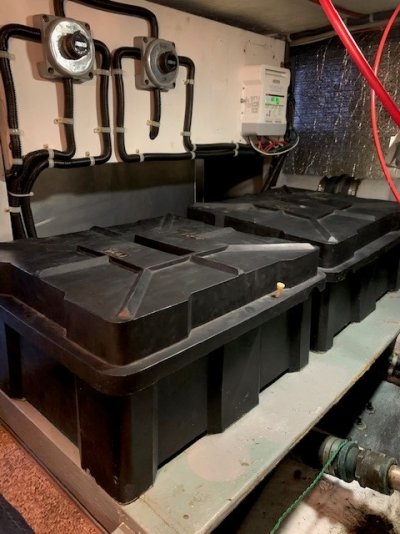4mo
Veteran Member
I'm going to split this out from the 8D thread:
I have a new to me Navigator 53 with 2 8D's as the starting and another 2 8d's as the house bank that all need replacing, we've been running them combined on the small cruises, but planning on being out in the salish sea for a couple weeks on anchor moving every other day or so and would like to keep genset runtime down.
Option 1: 6 Dyno GC batteries for the house in one of the double 8D boxes, and then new 8D's starting or 2 group 31's to start the TAMD 63's in the other double 8d box. If possible I'd love to have 2 more 6v's in that box tied into the house bank.
Option 2: Combine the house and start banks with 12 6v GC2's. There will be a dedicated start battery for the generator so if somehow I deplete the bank I should be able to eventually start the engines. Maybe hard wire a switch to start the engines off the same group 31 gen start battery?
They are charged by a ProNautic 40amp charger as well as an alternator.
Thoughts?
I have a new to me Navigator 53 with 2 8D's as the starting and another 2 8d's as the house bank that all need replacing, we've been running them combined on the small cruises, but planning on being out in the salish sea for a couple weeks on anchor moving every other day or so and would like to keep genset runtime down.
Option 1: 6 Dyno GC batteries for the house in one of the double 8D boxes, and then new 8D's starting or 2 group 31's to start the TAMD 63's in the other double 8d box. If possible I'd love to have 2 more 6v's in that box tied into the house bank.
Option 2: Combine the house and start banks with 12 6v GC2's. There will be a dedicated start battery for the generator so if somehow I deplete the bank I should be able to eventually start the engines. Maybe hard wire a switch to start the engines off the same group 31 gen start battery?
They are charged by a ProNautic 40amp charger as well as an alternator.
Thoughts?

